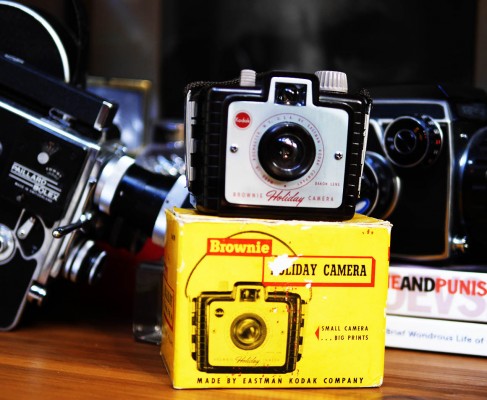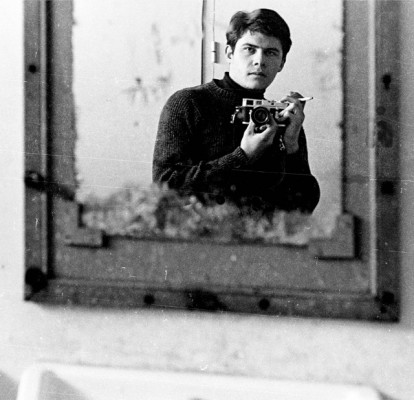 LAS CRUCES, NM — My dad used to say that if Hitler hadn’t started World War II I wouldn’t have been born anywhere, but especially not in Costa Rica.
LAS CRUCES, NM — My dad used to say that if Hitler hadn’t started World War II I wouldn’t have been born anywhere, but especially not in Costa Rica.
My dad, Leon Smith, was 19, a gangly six-foot tall Jewish kid from Washington, D.C., when the war broke out and he enlisted in the Army to fight Nazis. The Army, in its infinite wisdom, sent him to Costa Rica.
Not speaking a word of Spanish was not a handicap for a handsome guy in a U.S. Army uniform and soon enough he met a beautiful señorita, married her and I was born in San Jose a week before Hitler killed himself.
Leon became a lawyer working for an international organization in Costa Rica, but he was an avid amateur photographer. When I was nine, he put a Kodak Holiday Brownie camera in my hands and I got the bug. A year later we were developing and printing photos in his darkroom.
Related: Street Photography exhibit, rare Beatles print to help journalism students
Interview: KTEP-FM interview of David Smith-Soto on street photography
I was an urban kid growing up in San Jose so I photographed life in the streets. I was also extremely nearsighted and I quickly noticed that I could see details in the photos that I never saw when I was taking the picture. That got me into a lifelong habit of seeing with the camera.
One of those photos shot with the Brownie camera in 1954 will be on display at the University of Texas at El Paso in October along with some 20 other images shot during 60 years of stalking the decisive moment in city streets in many different countries. The prints will hang in the Glass Gallery of the Fox Fine Arts Center on the University of Texas at El Paso campus, October 23 – 31.
My work on four different newspapers and 15 years in international public relations took me to many countries in the Americas, Europe, Asia and the Middle East. A Leica camera was always with me, almost as part of my body — my eyes. Although I earned my living as a writer, editor and manager, photography has been my enduring passion.

Smith-Soto in Tangier, 1964
In Oxon Hill High School, in the Maryland suburbs of Washington, D.C., I usually felt I was an outsider because I couldn’t relate to the American upbringing of the others, played soccer not football and peered at the world through Coke-bottle-bottom eyeglasses.
I was a nerdy kid, but photography integrated me into school life, working on the yearbook and I made two friendships that have lasted a lifetime and were critical to my success in life and with a camera — the two Mikes.
Mike Mitchell, who has earned his living since high school as a photographer, and I would roam the streets of Washington, D.C. during our teenage years photographing everything from presidential inaugurations to the shops and characters we ran into.
Mitchell has recently received worldwide acclaim for his photos of the Beatles’ first U.S. concert in Washington when he was 18. One of those photos will hang with mine at the UTEP exhibit.
Mike Boaz was everything I wasn’t, a handsome football star and all around athlete who happened to love poetry and that love of literature connected us. After graduation we bought one-way tickets on Icelandic Airlines and flew to Europe backpacking our way from Luxembourg through Paris and Madrid all the way to Tangier, the Leica always in my hands, except for the time in Madrid when I had to pawn it so we could eat.
The following year we drove from Washington to Mexico City in a beat-up Fiat 600 with a sewing machine motor that stopped for water every 50 miles and went to school there at the University of the Americas for one semester. The Leica was there too.
That was the beginning of my street photography and through the years I have looked at the people and details of many of the great cities of the world through my Leica. This fall I celebrate 10 years as a teacher at UTEP, a career I never even imagined, where I discovered the satisfaction of sharing my love for this art with younger generations in a new century.


David, wonderful story. I knew some of the details, but no memory of how your father introduced you to photography. Interesting about Mike Mitchell. He and I was students together at the Rochester Institute of Technology. It was through him that I got to know you. He introduced us while I was stationed, in the Navy, near Washington, D.C., in 1967.
I’m sorry that I can’t be there to see your exhibit.
Best,
Keith
Typo in my comment: He and I was should be He and I were.
Linda historia David. Un abrazo